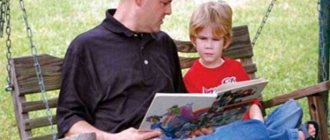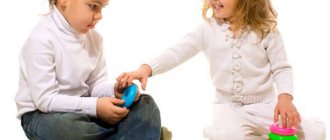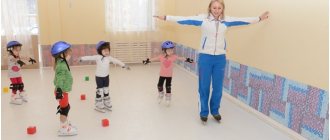Raising a 5-year-old child: features of education
The long-awaited time has come when you and the baby survived the crisis of three years. The baby has grown up and become more independent. Raising a 5-year-old child is based on the same principles as at a younger age. However, it has a number of features, which we will focus on in this article.
It is worth noting that by this age the child has almost developed a certain manner of behavior. He has learned a lot and can complete most tasks on his own. However, the baby is still distracted, and parents must regularly remind him of basic hygiene rules and proper behavior with peers and adults.
The formation of personality, determination of one’s place in society, and awareness of one’s own capabilities continue. Another turning point in the child’s formation begins - they begin to prepare him for school.
By this time, the baby had gotten used to the idea that he needed to attend kindergarten and his mother had to go to work. Despite this, he increasingly begins to demand attention, which parents cannot always give him in the right amount.
Raising a 5-year-old boy is not significantly different from raising a girl. The features of their characters differ.
Girls are more diligent and patient, obedient and careful. The boys are active and energetic. Although such a division is relative, because all children are different.
Raising children at this age does not have clear gender differences.
Features of communication
The age of five is a period of intense communication with peers. The baby is sufficiently adapted to the social environment and has ideas about the rules of behavior in it.
At this age, the baby consciously and without fear makes contact with children and adults, knows how to formulate a request or express gratitude.
By this time, as a rule, his aggressive sense of ownership disappears, and he is happy to share toys with friends. That is, the baby becomes more and more sociable.
However, not all kids communicate kindly with their peers. Some children try to assert themselves at the expense of others, to show leadership by demonstrating physical strength.
In such a situation, parents must definitely find out what prompts the child to behave aggressively, what is the reason for his negative relationship with peers.
The family must convince the child that they love and understand him and can help him deal with what worries him. The main task of parents is to teach their child to resolve conflict situations peacefully.
Parents have different opinions when it comes to whether to give change. Some suggest that physical force is unacceptable in this case as well. Others are confident that the ability to fight back against an offender is an important quality of an independent person, especially when it comes to a boy.
Each of them is right in their own way. Psychologists believe that a baby should be able to resist aggression. Whether he does this physically or mentally depends on the character of the baby. However, there must be opposition, otherwise the child will grow up unable to withstand life's difficulties.
Punishment and reward
It is impossible to raise a child without punishment: this is an integral part of general education. However, it is important to understand which punishment is correct and which may cause psychological trauma.
There are two types of punishment:
- Psychological;
- Physical.
It should be noted right away that punishment should be resorted to only after using persuasion and explanation. The child should be explained what his actions are unpleasant for others, what consequences they can bring. And only if these methods do not have any effect should punishment be resorted to.
Psychological punishment of a child can be as follows:
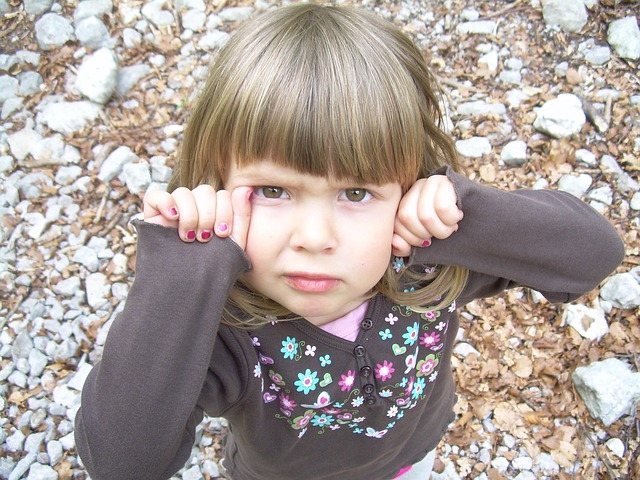
- Refusal to communicate with the baby.
At the same time, mom or dad must explain that they do not want to communicate with the baby until he begins to listen to their words. Most often, this method turns out to be very effective: the baby will strive in every possible way to win the favor of his parents.
- Prohibition or restriction.
Parents explain that the child will not be able to play his favorite game on the computer or watch cartoons now, since he behaves badly. Moreover, you need to specifically explain to the baby what he is doing wrong (throwing toys around, not listening to his mother, etc.)
Physical punishment is used in two forms:
- Restriction of freedom of movement.
The child is placed in a corner or asked to be alone in the room for some time so that he realizes his mistakes.
- Physical punishment.
This punishment requires no explanation. It was used by our ancestors as the main method of education. But psychologists believe that this type of punishment is not acceptable, since it can cause not only physical, but also moral suffering, which can develop into serious psychological disorders.
Basic rules that parents should follow when punishing a child:
- Under no circumstances should a child be scolded in public;
- The punishment must correspond to the gravity of the offense;
- Punishment cannot be delayed. After a few hours, the baby will no longer be able to understand why he is being punished;
- You should not threaten your child with punishment and then not fulfill your promise. The baby will no longer accept the comments of adults;
- It is not always necessary to punish a child for lying. What seems like a lie to an adult is just another flight of fancy for a child. After all, children at this age have a well-developed imagination, and they cannot always distinguish between the real world and the fictional one.
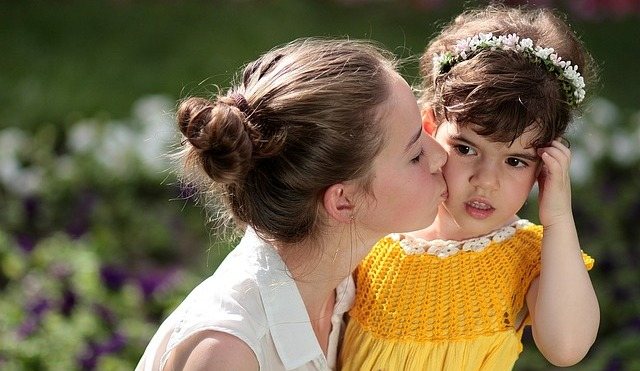
Proper upbringing of a little person at five years old is impossible without praise and encouragement. You need to praise your child for every good deed. You should not always accompany praise with gifts, because the child will develop the feeling that for every task well completed, the parents are obliged to buy him something.
Computer in education
Nowadays, the computer has become an integral part of life.
Often five-year-old children master computer games before they learn to read and write. This has its pros and cons. Many modern computer games are designed specifically for preschool children. With their help, your baby can master counting, learn to read and learn a lot of useful information.
However, uncontrolled presence in front of a computer monitor leads to the fact that the little ones choose games on their own that do not carry any educational load. Moreover, they can negatively affect the psyche of children. Games in which violence occurs infect children with aggressiveness.
Parents should be very careful when choosing computer games, since the development of abilities and behavior largely depends on them.
Moreover, it is necessary to strictly regulate the time the child spends in front of the monitor. The baby should not play more than 20 minutes a day. After the computer, it is advisable to offer the baby outdoor games.
Getting ready for school
Starting from the age of five, it is important to begin psychologically preparing the child for school. It provides the following points:
- Knowledge of the alphabet;
- Teaching basic numeracy skills;
- Development of knowledge about nature and its inhabitants;
- To promote the ability to understand the time of day, days of the week;
- Instill the ability to engage in educational activities for a certain time;
- Conduct mini-lessons in a playful way.
Personal example
The family hearth is a place that serves as protection, support and support. With the help of the family, personality develops.
Parents can tell their kids as much as they want about correct behavior, but these stories will have no educational value if adults do not adhere to the rules they teach.
You can raise a child correctly only by your own example.
Age features of development of children 5-6 years old. consultation (senior group) on the topic
Age-related features of the development of children of the older group. The age of 5-6 years is the senior preschool age. It is a very important age in the development of the child’s cognitive sphere, intellectual and personal. It can be called the basic age, when many personal qualities are formed in the child, the image of “I” and gender identification are formed. At this age, children have an idea of their gender identity based on significant characteristics. An important indicator of this age of 5-6 years is the child’s evaluative attitude towards himself and others. Children can be critical of some of their shortcomings, can give personal characteristics to their peers, and notice the relationship between adults or an adult and a child. 90% of all child’s personality traits are formed at the age of 5-6 years. A very important age when we can understand what a person will be like in the future. The leading need at this age is the need for communication and creative activity. Children's communication is expressed in free dialogue with peers and adults, expressing their feelings and intentions through speech and non-verbal means (gestures, facial expressions). Creative activity manifests itself in all types of activities; it is necessary to create conditions for the development of creative potential in children. The leading activity is play; in play activities, children can already assign roles and build their behavior, adhering to the role. Game interaction is accompanied by speech. From the age of 5, a child begins to adequately evaluate the results of his participation in competitive games. Satisfaction with the result begins to bring joy to the child, promotes emotional well-being and maintains a positive attitude towards oneself. The leading function is imagination; children’s imagination rapidly develops. Imagination is the most important mental function, which underlies the success of all types of human creative activity. Children need to be taught the ability to plan upcoming activities, use imagination to develop an internal plan of action, and exercise external control through speech. At 5-6 years old, a child absorbs all cognitive information like a sponge. It has been scientifically proven that a child at this age remembers as much material as he will never remember later in his life. In cognitive activity, the perception of color, shape and size continues to improve. Children name not only primary colors, but also their shades, and know their shapes. At this age, the child is interested in everything related to the world around him and expanding his horizons. The best way to get scientific information is to read a children's encyclopedia, which clearly, scientifically, in accessible language describes to the child any information about the world around him. The child will gain an understanding of space, the ancient world, the human body, animals and plants, countries, inventions and much more. This is the period of highest opportunities for the development of all cognitive processes: attention, perception, thinking, memory, imagination. For the development of all these processes, the game material becomes more complex, it becomes logical, intellectual, when the child has to think and reason. The designer develops logical thinking well. The important point here is folding according to a pattern - a pattern, starting with simple patterns. Cubes, various puzzles, mosaics must be laid out according to the picture, focusing on color, shape, size. In logic games, the child must see the sequence, trace the logical pattern and justify it. In logic games, the personal aspect of the preschooler can also be traced. Having correctly solved the exercise, the child rejoices, feels self-confidence and the desire to win. There are children who give up, do not believe in themselves, and the task of parents is to develop in the child the desire to win. It is important that the child must know that “I can.” It is necessary to instill an interest in thinking and reasoning, finding solutions, and teach them to experience pleasure from the efforts made and the results obtained. It is important that children succeed. The main thing in the development of children 5-6 years old is their cognitive development and broadening their horizons. And all games aimed at this will give good results. Do not answer in monosyllables - “yes” or “no”. Answer your child in detail, ask his opinion, make him think and reason. Why is it winter now? Prove it. Why can't you light a fire in the forest? Justify. Children have a lot of unconscious information in their heads; the task of adults is to help them with this. ATTENTION: • - complete the task without being distracted for 10-12 minutes, there is a transition from involuntary to voluntary attention; • - find 5-6 differences between objects, complete tasks according to the proposed model, find pairs of identical objects - this is concentration of attention; MEMORY: • - memorize 6-8 pictures within 1-2 minutes; • - recite several poems by heart; • - retell the read work close to the text; THINKING: • - determine the sequence of events; • - put together a cut picture of 9 parts; • - find and explain inconsistencies in the pictures; • - find and explain the differences between objects and phenomena; • - find among the proposed 4 extra items, explain your choice.MATHEMATICS• Counting within 10, familiarization with numbers.• Correctly uses cardinal and ordinal numbers (within 10), answers the questions: “How much?” “Which one?”• Equalizes unequal groups of objects in two ways.• Compares objects (by length, width, height, thickness); checks accuracy by a certain method of application or application.• Expresses the location of an object in relation to itself, to other objects.• Knows some characteristic features of familiar geometric figures.• Names morning, afternoon, evening, night; has an idea of the changing parts of the day.• Names the current day of the week. SPEECH DEVELOPMENT• Has a fairly rich vocabulary.• Can participate in a conversation, express his opinion.• Makes up a story based on a plot picture, a set of pictures; sequentially, without significant omissions, retells short literary works. • Determines the place of a sound in a word. Learning to read must begin with the formation of a phonemic analysis of a word. COGNITION• Distinguishes and names types of transport, objects that facilitate human work in everyday life.• Classifies objects, determines the materials from which they are made.• Knows the name of his hometown, country, its capital, home address.• Knows about the interaction of man with nature at different times of the year.• Knows about the importance of the sun, air, water for humans, animals, plants.• Treats nature with care. READING FICTION• Knows poems, counting rhymes, riddles.• Names the genre works.• Dramatizes short fairy tales, reads poems by role.• Names a favorite children's author, favorite fairy tales and short stories. In visual activities, a 5-6 year old child can freely depict objects of round, oval, rectangular shape; usually the drawings are schematic images of various objects; children love to draw and sculpt. Children successfully cope with cutting out rectangular and round objects; the ability to cut along a contour is one of the indicators of readiness for school. In the development of the emotional sphere, it is necessary to form a positive emotional attitude towards oneself and one’s name, towards members of one’s family, towards friends, and to teach children to empathize , help as much as possible, take care of the younger ones. A child can voluntarily control his behavior, as well as the processes of attention and memory, and emotional reactions. Parents MUST remain an example for children. If the parents convey positive information, if the child is good at heart, there is no fear, resentment, or anxiety, then any information (personal and intellectual) can be instilled in the child.

